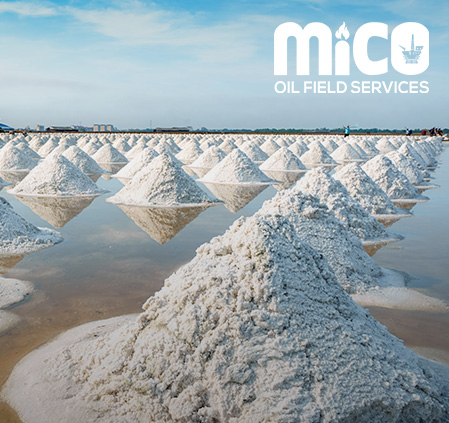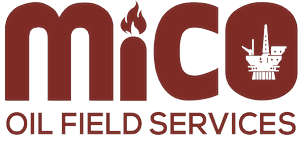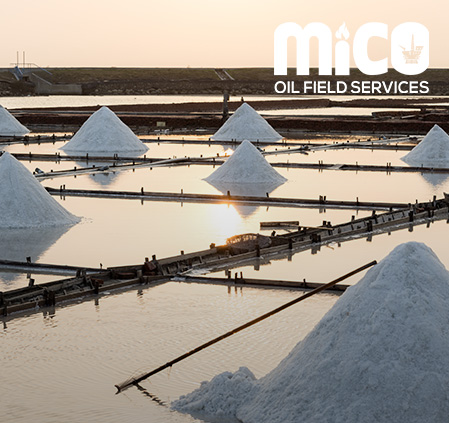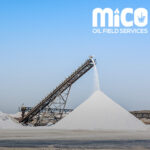Sea salt, a mineral treasure harvested from the ocean, has been an essential commodity since ancient times. Its production dates back thousands of years, where it was not only a key ingredient in food preservation but also a currency and a symbol of wealth. Today, sea salt continues to hold a revered place in kitchens and industries alike, valued for its natural flavor and mineral content.
Al Manazel Integrated Co. L.L.C (MICO), a prominent player in Oman’s oil and gas sector, has recognized the significance of salt in industrial applications. Through their extensive salt supply services, MICO plays a vital role in supporting various sectors, including oil and gas, where salt is indispensable in processes such as desalination, drilling, and water treatment. MICO’s dedication to providing high-quality salt products highlights the enduring importance of this mineral in both traditional and modern contexts.
Traditional Methods of Harvesting Sea Salt
The art of sea salt harvesting has deep roots in history, with techniques passed down through generations. Ancient salt producers utilized solar evaporation, a method still in practice today. Seawater is channeled into shallow ponds, where the sun and wind naturally evaporate the water, leaving behind crystallized salt. This method, while time-consuming, yields salt that retains a complex mix of minerals, contributing to its distinctive flavor.
In some coastal regions, like those around the Mediterranean, salt pans have been in use for millennia. The careful management of these pans—allowing seawater to flow in and out, controlling evaporation rates, and harvesting at the right time—requires a blend of knowledge, patience, and skill.

Comparison Between Ancient and Modern Techniques
While traditional methods continue to thrive, modern technology has introduced more efficient ways of harvesting sea salt. Industrial-scale operations now use mechanical evaporators and advanced filtration systems to speed up the production process. These techniques allow for large-scale salt production, meeting the demands of a global market.
However, the mechanization of salt harvesting often comes at the cost of flavor and mineral content. Unlike the slow, natural crystallization of traditional methods, modern processes can strip the salt of its unique characteristics, resulting in a product that is purer but less complex in taste.
Benefits of Traditional Methods for Flavor and Quality
The traditional harvesting of sea salt is not just about preserving an ancient craft; it also ensures a higher quality product. The slow evaporation process allows for the formation of larger, more irregular salt crystals, which are prized by chefs for their texture and flavor. The minerals present in the seawater—such as magnesium, calcium, and potassium—are preserved in the final product, enhancing the taste and nutritional value of the salt. The industrially produced salt often undergoes extensive processing, which can remove these beneficial minerals. As a result, traditional sea salt is often considered superior in both culinary and health applications, maintaining a loyal following among food enthusiasts and health-conscious consumers.
Economic and Cultural Impact on Coastal Communities
The production of sea salt has long been an economic mainstay for many coastal communities. In regions where traditional salt harvesting remains a way of life, it supports local economies by providing jobs and preserving cultural heritage. The salt pans, with their rhythmic cycles of flooding and drying, are not just production sites but also landscapes of historical and environmental significance.
In parts of Oman, traditional salt harvesting methods continue to support local communities, blending ancient practices with modern needs. The preservation of these techniques not only maintains a connection to the past but also ensures that the unique qualities of the region’s sea salt are recognized and valued in global markets.
The evolution of sea salt production from ancient to modern times reveals a complex interplay between tradition and technology. While modern techniques offer efficiency and scalability, they often lack the richness and character of salt harvested through traditional methods. The continued practice of these ancient techniques, particularly in regions with a strong cultural heritage, highlights the importance of preserving not just the product but the knowledge and skills passed down through generations.

Companies like MICO, with their focus on high-quality salt supply for industrial purposes, play a crucial role in maintaining the relevance of this age-old commodity in the modern world. By ensuring the availability of salt for critical applications in industries like oil and gas, MICO not only supports technological advancement but also contributes to the sustainability of traditional practices. The balance between preserving ancient methods and embracing modern technology will likely define the future of sea salt production, ensuring that this essential mineral continues to be a cornerstone of both culinary and industrial processes.









